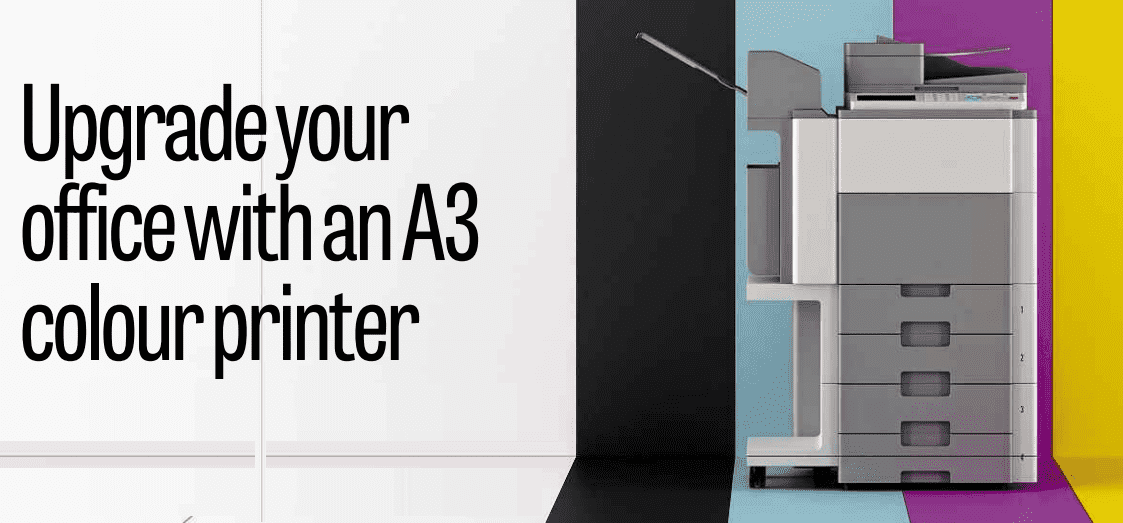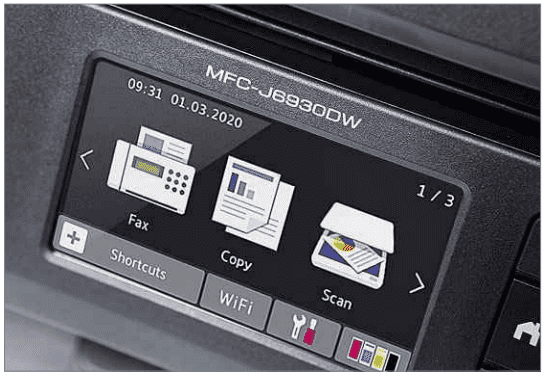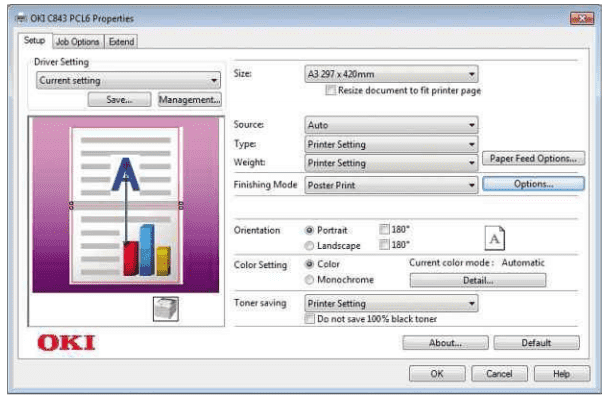Upgrade your office with an A3 color printer
Dave Mitchell discovers how investing in an A3 color printer can make your business more flexible – and save money too
Prices for A3 color printers are at an all-time low – so now’s the perfect time to move your marketing, brochure and poster production in-house.
[sc name=”ad 2″]
That’s not to say that commercial print shops no longer have a role. They can still be the right answer for high-volume, one-off runs of specialist prints. But outsourcing means dealing with lead times, shipping costs and the temptation to pay for copies you don’t need to get volume discounts. In-house printing gives you more control over your processes, and reduces costs in the medium term. You can cut wastage by printing only what you need, when you want it – and have it ready for distribution immediately.

That being the case, it’s no surprise that A3 printers are fast becoming commodity items. Intense competition keeps driving printing costs down, while print technologies are constantly improving: many printers are capable of producing stunning results that look just as good as anything you’d get from a professional print bureau.
This month, we review four A3 printers from the biggest names in the industry, to help you make the right BUSINESS FOCUS insourcing decisions. On test are laser, LED and inkjet models, plus print-only and MFP (multi-function printer) versions, with prices ranging from less than £200 up to nearly five figures.
Pump up the volume
Up-front prices may be tempting, but as ever the cost of the printer itself may be almost insignificant compared to your ongoing costs. Cheap printers often require more expensive consumables; for high print volumes this can hugely increase your total cost of ownership.
A case in point: on the following pages, we test a big departmental laser that produces mono and color pages for 0.32p and 2.33p, alongside a much cheaper LED printer that’ll do them for 1.3p and 7.4p.
If your workforce prints 50 A4 color pages every day for a year, the LED printer will end up costing you £1,350 in consumables – whereas the laser will do them for £425. Scale up to an A4 ream per day and yearly color running costs for the LED printer hit £13,505, versus £4,252 for the laser. That’s almost the total cost of the laser recouped in a year.

BELOW Brother’s MFC-J6930DW offers A3 print, scan, copy and fax features for a giveaway price
Clearly, before you spend a penny, it’s vital to calculate your page counts and color usage requirements. Remember though that average running costs are calculated using 5% coverage on A4 paper. If you’re printing a lot of A3 color posters and brochures, your usage will be much higher.
Good technology
Conventional laser printers are a great choice for business printing, as they’re fast, unfussy about paper quality and very reliable. They’re affordable, too: A3 models are quite a bit more expensive than their A4 counterparts, but still well within reach of even the smallest business.
LED printers aren’t that different to lasers, but have fewer moving parts and cost less to manufacture. They require more consumables than lasers, so printing costs can be higher, but speed and color quality are just as good: the A3 LED printer on test this month produced superb color marketing material.
There are still good reasons to go the inkjet route. The latest business models combine high-capacity ink tanks with big duty cycles, and are a natural choice for high resolution photo printing. Be wary of the print speeds quoted by inkjet manufacturers, however: these are based on low-resolution draft prints.
Printing at the highest resolution is often markedly slower – we’ve seen some models that, in high-quality mode, deliver less than one-tenth of the quoted top speeds.
Printer or MFP?
Aside from regular printing duties, a multi-function printer (MFP) comes with additional useful capabilities.
Two of the printers on test this month are endowed with A3 color flatbed scanners, teamed up with automatic document feeders (ADFs) for copy and scan functions.

LEFT Oki’s PCL6 driver offers a range of controls for big poster prints
If you don’t already have a scanner, this can open up new ways to handle documents, and cut down on wastage by allowing you to digitize documents for archival and send scanned documents as emails. Some units come with fax capabilities as well – a technology that still, even in 2017, has a place in many industries.
MFPs may also come with cloud enabled features, allowing them to link up with services such as Dropbox, Google Drive and OneDrive. This allows users to print documents stored in the cloud, and scan documents directly to their accounts.
All business-grade A3 printers and MFPs come with built-in Ethernet, but it’s worth looking for wireless capabilities as well. Even if the printer itself can be conveniently hooked up to a physical connection, features such as AirPrint and WiFi Direct make it easy for users to print documents directly over the network from mobile devices. Consider NFC too, to enable “tap-to-print” services.
Curb their enthusiasm
One potential risk of installing a high-quality color printer in your office is that employees will be tempted to use it for personal prints. If you don’t want your business paying for this then look for a printer with proper access-control features. For example, Brother’s Secure Function Lock can restrict color printing, enforce per-user page limits and require NFC ID tags for local authentication. Kyocera’s ColourControl HyPAS app can require users to enter a PIN at the printer’s control panel to unlock color usage.

ABOVE Epson includes a handy photo printing utility with its A3 inkjet
You can also reduce costs by using cheap 75gsm paper for draft documents, and print in duplex (double-sided) by default. We’ve yet to see a printer that can enforce duplex printing, but encouraging users to do this can slash your paper usage, which saves you money and is also, naturally, better for the environment.
A final thing to think about is security. If you’re storing personally identifiable information on the printer, this will come under the remit of the GDPR in May 2018. Internet connected printers can be hacked if you don’t take precautions, so make sure you change all default passwords immediately, and if you’re choosing a printer with internal storage, make sure it can be encrypted.
Internet-connected printers can be easily hacked, so make sure you change all default passwords immediately
The A3 printers we’ve tested this month make in-sourcing for SMEs a reality; all of them are capable of producing high-quality marketing material on demand. Whether you choose laser, LED or inkjet, they all offer an impressive range of features.
Read on to see which one will bring out your inner designer.
No posts for this criteria.